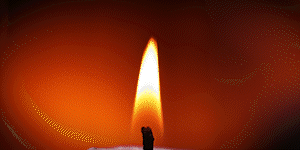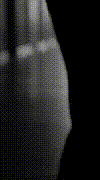From Science News, Vol. 157, No. 14, April 1, 2000, p. 214.
In late 19th-century Paris, absinthe was the favored drink of artists and writers. Some say addiction to the emerald-green liqueur drove Vincent Van Gogh to take his own life. Edgar Degas, Henri de Toulouse-Lautrec, and Pablo Picasso all painted absinthe drinkers, capturing both the drink's popularity and its dark side.
Doctors at the time recognized that absinthe can cause convulsions, hallucinations, and psychotic behavior. Now, researchers at the University of California, Berkeley and Northwestern University Medical School in Chicago have learned how the drink's toxic component wreaks its neurological effects.
They found that the toxin, alpha-thujone, blocks brain receptors for gamma-aminobutyric acid, or GABA. Without access to GABA, a natural inhibitor of nerve impulses, neurons fire too easily and their signaling goes out of control.
"This paper is very important because it gives the biochemical mechanism for toxicity," says biochemist Wilfred Niels Arnold of the University of Kansas Medical Center in Kansas City.
Berkeley researchers Karin M. Höld, Nilantha S. Sirisoma, and John E. Casida collaborated on the study with Tomoko Ikeda and Toshio Narahashi of Northwestern. The group's results, reported this week at the American Chemical Society meeting in San Francisco, will appear in the April 11 Proceedings of the National Academy of Sciences.
Scientists had documented thujone's effects by 1916, but "nobody had ever figured out exactly where the toxin was working," says Höld. She and her colleagues conducted tests on fruit flies, mice, and rat neurons to connect alpha-thujone to GABA receptors. They also examined how animals' liver enzymes break down the compound.
Despite doctors' warnings about the dangers of absinthe, the beverage became very popular, especially in France. Between 1905 and 1913, Belgium, Switzerland, the United States, and Italy cracked down, banning the liqueur. France followed in 1915.
In some countries, notably the Czech Republic, absinthe is still available, albeit in a less potent form. Old absinthe contained about 260 parts per million of alpha-thujone, says Arnold. "Present-day absinthe generally has less than 10 parts per million," he says, which is below the maximum concentration permitted by European beverage guidelines. In today's absinthe, "the most toxic compound is the alcohol," quips Arnold.
Alpha-thujone comes from the herb wormwood, which flavors absinthe. Although few people now drink the liqueur, "a lot of herbal preparations are available on-line, and one is wormwood oil," says Höld. People have used this oil since antiquity to treat digestive disorders. The alpha-thujone concentration in the oil is much higher than in absinthe and is a greater potential health concern, says Höld.
Research into absinthe waned after its prohibition, Arnold notes. However, these new results reveal potential uses for alpha-thujone. "A lot of insecticides work on GABA receptors," notes Höld.
Another group at Berkeley is planning to study long-term effects of the compound in rodents, she adds. That work may provide important information for modern-day absinthe drinkers who ingest low toxin doses over a lifetime.





